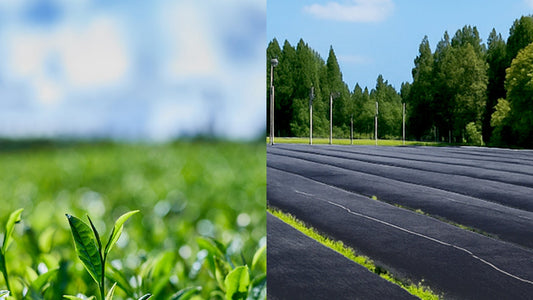A morning cup to gently awaken the body and check in with how you’re feeling for the day ahead.
Whether it’s Japanese tea, coffee, black tea, or even a smoothie, many people begin their day with a carefully chosen drink—prepared with quiet intention and a touch of affection.
Today, you can enjoy green tea in Africa or sip coffee each morning in China—our favorite drinks are now part of a global culture. But back in the 1600s, during Japan’s Edo period when Japanese tea first began to take root, what kind of tea did ordinary people actually drink?
And what might that tea—savored by our distant ancestors—have tasted like?
■ Tea Districts and the Morning Tea Ritual

It was around the 1600s, during the Edo period, when tea began to spread widely among the general public—coinciding with the formalization of the tea ceremony as chado, or “the Way of Tea.” During this time, dedicated tea districts began to emerge across Japan. The teas of these districts were not the refined, ceremonial-grade matcha we think of today.
Instead, two simple types dominated: one made by infusing steamed and dried tea leaves, and another prepared in the Chinese style—by pan-firing the leaves before brewing.
Both types of tea were made not with premium first- or second-harvest leaves, but with lower-grade leaves—resulting in a clean, uncomplicated flavor, much like today’s bancha (everyday tea).
Though not made from tender, seasonally harvested tea leaves, this so-called “extra tea”—brewed from overgrown, hardened leaves—held a special place in daily life. For common folk, a morning cup of bancha was more than just a drink; it was a cherished ritual. According to the historical text Honchō Shokkan, “Morning tea, always taken before breakfast, was especially favored by women,” capturing the quiet joy and comfort it brought to the start of the day.
The morning tea ritual—beginning the day with a cup of Japanese tea to gently awaken the body—has long been a cherished practice.
Today, bancha is often associated with evening consumption, but it took nearly 140 years for the tradition of morning tea to shift from bancha to sencha.
■ The Birth of Sencha and Gyokuro in Uji, Kyoto

While bancha was enjoyed across tea districts throughout Japan, Kyoto was already a step ahead—advancing tea cultivation and rethinking traditional processing methods.
Driven by a desire to enhance flavor, tea artisans experimented daily, embracing new ideas and techniques. In 1738, a breakthrough came: by steaming fresh young tea buds instead of older, pre-harvested leaves, they created a vibrant yellow-green infusion with a mellow taste and a refreshing aroma. This marked the birth of sencha—a remarkably refined tea that elevated everyday enjoyment.

Approximately a century later, the natural sweetness of young tea buds inspired the creation of gyokuro—a tea of exceptional refinement and depth.

Kyoto’s Uji region is renowned for producing the finest Japanese teas, including the highest-grade sencha and ceremonial matcha.
But what is it that sets Kyoto’s tea culture apart and earns it such enduring respect?
It is undoubtedly because this is the land where people have long cherished Japanese tea, approached it with sincerity, and devoted over a century to innovation and craftsmanship. It was here that sencha and gyokuro were born—elevating Kyoto’s tea culture to a world-renowned pinnacle of excellence.





